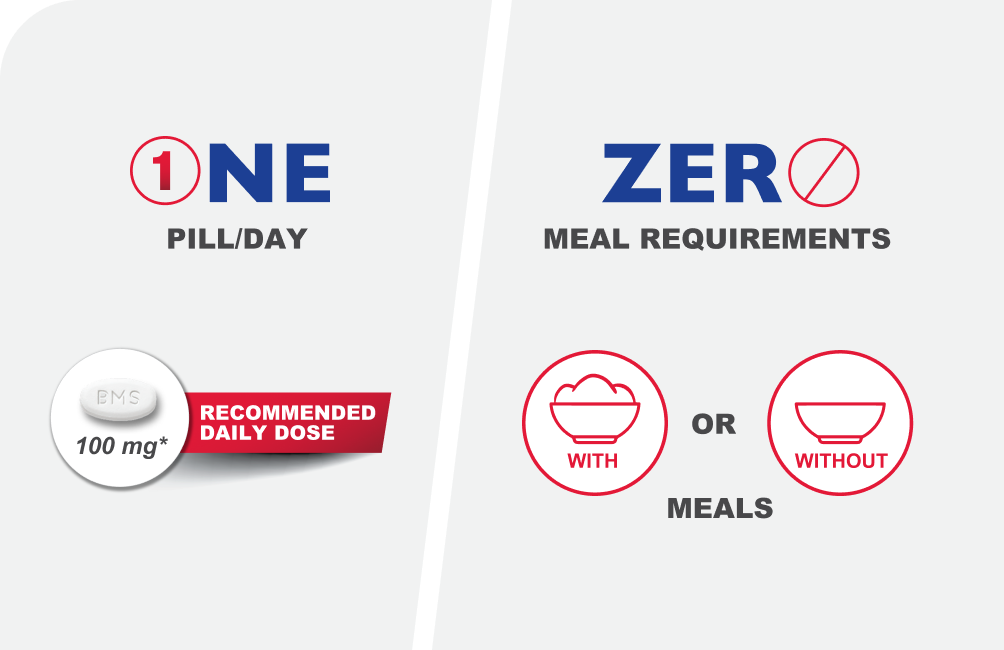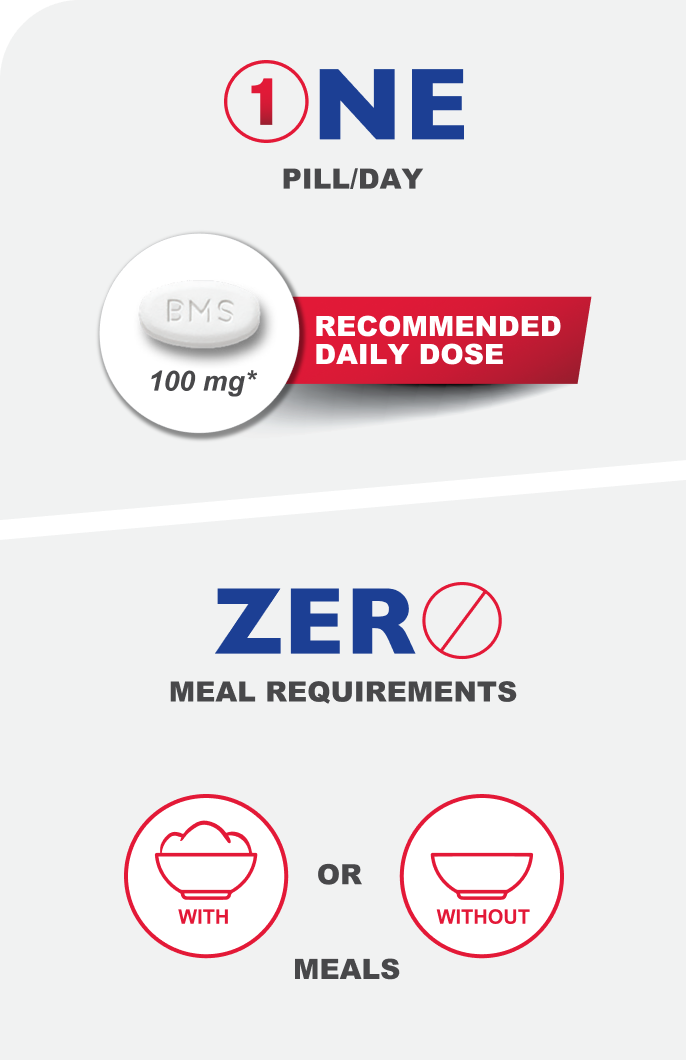This website is best viewed using the vertical display on your mobile device.
- SPRYCEL Patient Site
- BMS Resources
- Full Prescribing Information
- Indications
INDICATIONS
SPRYCEL® (dasatinib) is indicated for the treatment of adult patients with:
- Newly diagnosed Philadelphia chromosome-positive (Ph+) chronic myeloid leukemia (CML) in chronic phase
- Chronic, accelerated, or myeloid or lymphoid blast phase Ph+ CML with resistance or intolerance to prior therapy including imatinib
- Philadelphia chromosome-positive acute lymphoblastic leukemia (Ph+ ALL) with resistance or intolerance to prior therapy
SPRYCEL® is indicated for the treatment of pediatric patients 1 year of age and older with:
- Newly diagnosed Philadelphia chromosome-positive (Ph+) acute lymphoblastic leukemia (ALL) in combination with chemotherapy
- Philadelphia chromosome-positive (Ph+) chronic myeloid leukemia (CML) in chronic phase
In your newly diagnosed adult Ph+ CML in CP patients, SPRYCEL is a TKI with once-daily dosing and no meal requirements1


Alternative dosing options are available*

- Taken either in the morning or in the evening; no fasting requirements1
- Tablets should not be crushed, cut, or chewed; they should be swallowed whole1
- In clinical studies, treatment with SPRYCEL® (dasatinib) was continued until disease progression or until no longer tolerated by the patient1
See SPRYCEL drug interactions and dose modifications below.
For patients with chronic-phase Ph+ CML and ANC <0.5 × 109/L or platelets <50 × 109/L on a starting dose of 100 mg
- Stop SPRYCEL until ANC ≥1.0 × 109/L and platelets ≥50 × 109/L
- Resume treatment with SPRYCEL at the original starting dose if recovery occurs in ≤7 days
- If platelets <25 × 109/L or recurrence of ANC <0.5 × 109/L for >7 days, repeat Step 1 and resume SPRYCEL at a reduced dose once daily for second episode. Further reduce daily dose for third episode

Starting Dose*

100 mg once daily


Additionally, for third episode, discontinue SPRYCEL for patients resistant or intolerant to prior therapy including imatinib.
ANC=absolute neutrophil count; CP=chronic phase; TKI=tyrosine kinase inhibitor.
*Tablets not actual size.
For adults with Ph+ CML
- If a severe non-hematologic adverse reaction develops with SPRYCEL use, treatment must be withheld until the event has resolved or improved
- Thereafter, treatment can be resumed as appropriate at a reduced dose depending on the severity and recurrence of the event
Consider these modifications:
- For patients taking SPRYCEL 100 mg daily, a dose decrease to 20 mg daily should be considered.1†
- If SPRYCEL is not tolerated after dose reduction:
- EITHER the strong CYP3A4 inhibitor must be discontinued (when the strong inhibitor is discontinued, a washout period of approximately 1 week should be allowed before SPRYCEL dose is increased1)
- OR SPRYCEL treatment should be stopped until treatment with the inhibitor has ceased1
†This reduced dose of SPRYCEL is predicted to adjust the area under the curve (AUC) to the range observed without a CYP3A4 inhibitor. However, there are no clinical data with this dose adjustment in patients receiving strong CYP3A4 inhibitors.1
Reference:
- SPRYCEL full Prescribing Information. Bristol-Myers Squibb Company.







